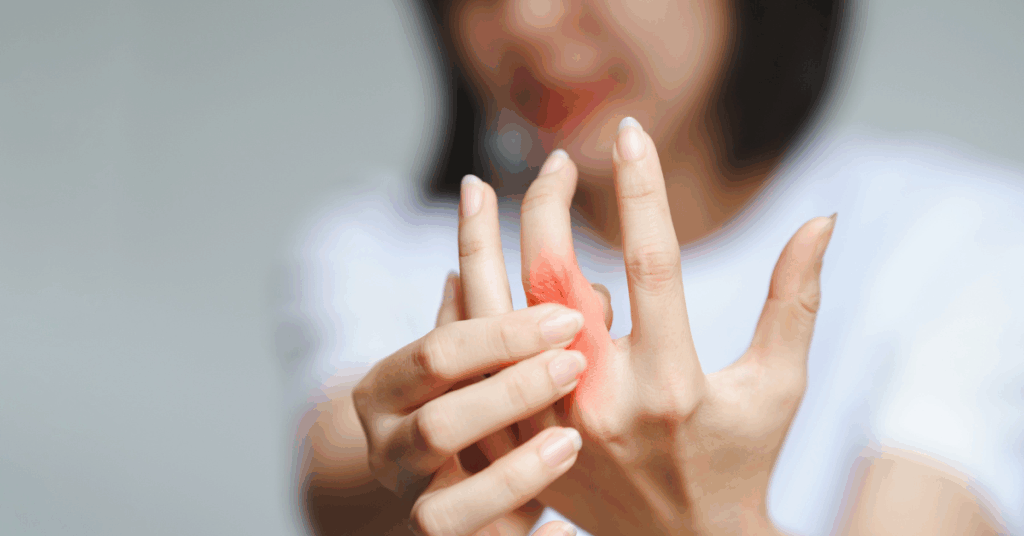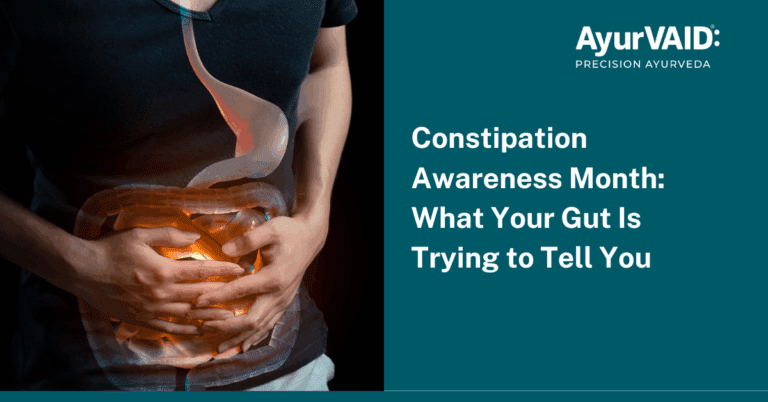Introduction
On thisWorld Arthritis Day(October 12th), we hear you — the individual who wakes up with a stiff knee, the partner who carefully assists a loved one out of bed, and the parent learning how to assist mobility in an older relative. Arthritis is not all about joints and X-rays; it’s a lived, frequently isolating experience of pain, restriction, uncertainty, and hope. Ayurveda does not promise a quick fix; it offers a clear, time-tested framework to reduce suffering, strengthen resilience, and restore movement—with attention to digestion, tissue nourishment, detoxification, and daily rhythm.
This year, let’s all commit to three doable pillars that anyone can start today: how to prevent arthritis, getting the right exercise for arthritis, and eating a healing arthritis diet. Together, these strategies are the basis of joint care in Ayurveda — building digestive power, enhancing flexibility, and soothing inflammation naturally. It’s not just about relieving pain but also about helping you move easily, live comfortably, and rediscover joy in daily motion.What does this look like for a patient — in practical, everyday terms?
Focus on digestion (Agni)Ayurveda classifies many joint problems under patterns such as Amavata (an inflammatory joint disease) or Sandhigata Vata(degenerative joint disease). The focus is on the root — disrupted digestive fire (Agni), accumulation of ama (metabolic residue), and vitiation of Vata—and restoring balance via individualised diets, herbal medicines, external therapies, and lifestyle adjustments.

How to Prevent Arthritis?
Ayurveda considers digestion to be the foundation of joint health. When Agni is weak, foods are incompletely processed into nourishing tissues and instead form ama — a sticky, inflammatory substance that travels and lodges in joints. Simple measures often help: regularity of meals, warm cooked foods, avoidance of heavy cold or processed items, and short courses of digestive-supporting herbs guided by a qualified practitioner. These steps reduce the internal fuel that feeds inflammation, prevent its manifestation and speed up healing.
Individualised herbal supportClassical formulations (for example, herbs with anti-inflammatory, antioxidant, and digestive properties) are chosen by Prakriti and the clinical pattern(Amavata vs. Sandhigata Vata). In clinical trials, multi-herbal, multimodal approaches were applied — not a single “pill for all,” and this individualisation appears central to the benefit.
External therapies and PanchakarmaAbhyanga (medicated oil therapy), warm fomentation (Svedana), and targeted procedures such as bandhana (local applications) or tailored Panchakarma (for selected patients) relieve stiffness, improve local circulation, and support tissue lubrication. These external therapies, when used by trained therapists and integrated with the person’s overall medical care, reduce pain and enhance function.
Exercise for Arthritis
Exercise is vital — even more so when joints feel painful. But it must be gentle, consistent, and adaptive.
- Start gently and gradually
You can start with low-impact movements like ankle circles, gentle knee bends, finger stretches, and shoulder rolls. It is beneficial to avoid quick and jarring movements.
- Include yoga and stretching
You can greatly increase the flexibility, joint nourishment, and Vata-pacifying capabilities of the body with yoga postures such as Tadasana, Bhujangasana, Trikonasana (modified), and Setu Bandha.
- Range of movement and joint mobilisation
Synovial fluid is responsible for the distribution of joint nutrients and gas exchange between cartilage and bone; maintaining synovial fluid is closely related to movement. Motions through the full available range (without pain) help maintain synovial fluid distribution and prevent stiffness.
- Consistency outdoes intensity
Frequent and short sessions (10 to 20 minutes) are typically more beneficial than sporadic and intense ones. Check your body frequently: a little soreness is okay. However, acute or sharp pain serves as a warning signal.
- Rest and recovery
In Ayurveda, it is mentioned about the seasons and the body cycles. Rest when needed, use hot fomentation or apply warming oils post-exercise if stiffness sets in.
Combining exercise for arthritis with mindful breathing, joint self-massage, and herbal oils brings far better sustained results than exercise alone.
Arthritis Diet
Dietary change in Ayurveda is pragmatic and individualised. In practice, we design a gentle, sustainable arthritis diet that fits local foods, culture and comorbidities. The foods you choose can either fuel inflammation or calm it.
Ayurveda diet principles for arthritis
- Favour warm, cooked, lightly spiced foods
Soups, kichadi (a type of light porridge), and cooked vegetables are easy to digest and help balance Vata. - Include anti-inflammatory herbs & spices
Turmeric, ginger, cinnamon, cumin, coriander, and green cardamom in moderation are classics in Ayurveda for their anti-ama and digestion-supporting qualities. - Minimise or avoid cold, raw, heavy, processed, frozen foods
These factors burden digestion and encourage the accumulation of ama. - Use healthy fats and oils
Ghee (in small amounts), sesame oil, flaxseed oil, and oils infused with warming herbs can help lubricate tissues. External oleation (Abhyanga) with warm medicated oil is also therapeutic. - Limit incompatible combinations
Avoid food combinations such as milk + sour fruits, fish + milk, and fruit after a heavy meal. - Seasonal and local foods
Use locally grown produce, seasonal vegetables and whole grains, which align better with your digestive system.
Lifestyle rhythms and self-care
What the evidence tells us
A compassionate invitation
If joint pain touches your life, please know — small steps matter. Prioritise digestion and gentle daily movement, seek care from qualified Ayurveda practitioners who communicate with your medical team, and choose a sustainable diet and self-care practices that you can keep. On this World Arthritis Day, we encourage action that honours both science and tradition: adopt prevention strategies, support research, and focus care on the whole person—body, mind, and routine.






